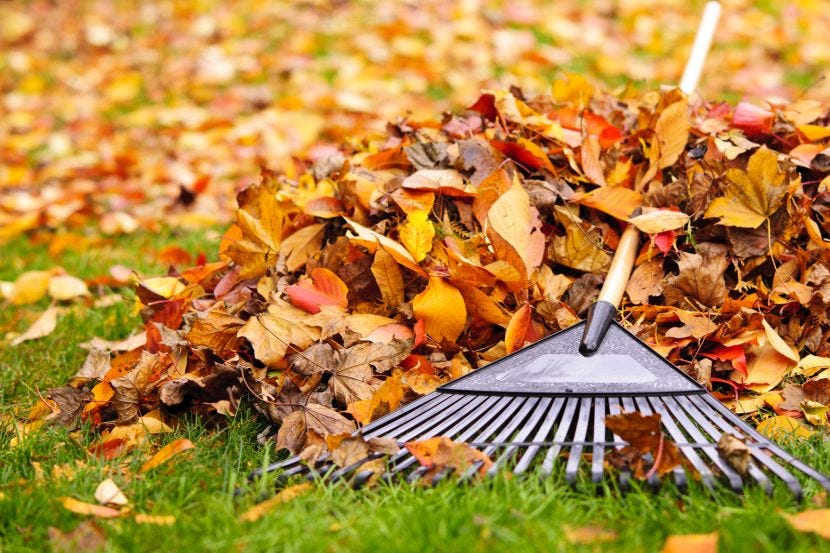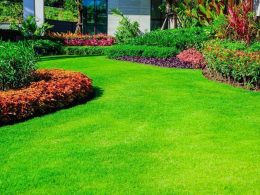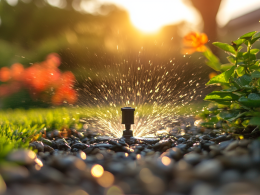Gardening is more than just a hobby; it’s a year-round commitment to nurturing plants, fostering biodiversity, and creating an inviting outdoor space. Each season presents challenges and opportunities, requiring different strategies to keep your garden vibrant and productive.
Whether you are an experienced gardener or just starting, understanding the rhythm of nature is key to making the most of each season. This guide will walk you through effective planting and maintenance strategies throughout the year, with special emphasis on how to maximize your garden’s potential using products like those from moowy.
Spring: The Season of Renewal
Spring is the quintessential season for gardeners, as it marks the beginning of the growing cycle. The soil warms up, daylight extends, and plants awaken from their winter dormancy. This is the time to lay the groundwork for a fruitful year.
1. Soil Preparation
Begin by testing your soil to determine its pH level and nutrient content. This will help you understand what amendments are necessary to create an optimal growing environment. Incorporate organic matter such as compost or well-rotted manure to enrich the soil and improve its structure. A well-prepared soil will support strong root growth and improve water retention.
2. Plant Selection and Sowing
Early spring is perfect for planting cool-season crops like peas, spinach, and lettuce, which thrive in cooler temperatures. As the season progresses, switch to warm-season crops such as tomatoes, peppers, and cucumbers. Consider planting perennial herbs and flowers that will return each year, providing a consistent foundation for your garden.
3. Mulching and Weed Control
Apply a layer of mulch around newly planted seedlings to help retain moisture, suppress weeds, and regulate soil temperature. Organic mulches, like straw or shredded leaves, break down over time, adding nutrients back to the soil.
4. Pruning and Fertilization
Prune dead or damaged branches from shrubs and trees to promote healthy growth. Fertilize perennials and shrubs with a balanced fertilizer to give them a nutrient boost as they start their growth cycle. A slow-release fertilizer, such as those offered by MOOWY, can provide essential nutrients throughout the growing season, ensuring steady and healthy plant development.
Summer: Sustaining Growth and Maximizing Yield

Summer is the season when your garden is in full swing. With long days and abundant sunlight, this is the period of rapid growth, flowering, and fruiting. However, summer also brings challenges, such as heat stress, pests, and drought.
1. Watering Techniques
Watering is crucial during summer, especially in hot, dry conditions. It’s best to water early in the morning or late in the evening to minimize evaporation.
Focus on deep, infrequent watering to encourage roots to grow deeper into the soil. Using soaker hoses or drip irrigation systems can help deliver water directly to the plant roots, conserving water and reducing the risk of disease.
2. Pest Management
Monitor your garden regularly for signs of pests and diseases. Early detection is key to preventing infestations from spreading. Use organic pest control methods, such as introducing beneficial insects like ladybugs and lacewings or applying neem oil, to keep harmful pests in check. Companion planting—growing certain plants together that naturally repel pests—can also be an effective strategy.
3. Harvesting and Deadheading
Harvest vegetables, fruits, and herbs regularly to encourage continuous production. Deadhead spent flowers to promote more blooms and maintain the aesthetic appeal of your garden.
Prune summer-flowering shrubs and perennials after they finish blooming to shape the plants and encourage more flowers.
4. Feeding Your Garden
Summer is a period of high energy expenditure for plants, so regular feeding is essential. Use a liquid fertilizer every 2-4 weeks to provide a quick nutrient boost. For lawns, consider using a specialized lawn food like MOOWY’s premium grass feed to keep your turf lush and green throughout the season.
Autumn: Preparing for the Cold

Autumn, or fall, is a transitional period where the focus shifts from growth to preparation for the upcoming winter. This season is all about clean-up, planting hardy species, and protecting your garden.
1. Clean-Up and Composting
Remove any dead or diseased plants to prevent them from becoming a haven for pests or pathogens. Add healthy plant material to your compost pile to create rich organic matter for next spring. This is also a great time to rake up fallen leaves and add them to your compost or use them as mulch.
2. Planting and Transplanting
Autumn is ideal for planting trees, shrubs, and perennials, as the soil is still warm enough to encourage root growth before winter sets in. Consider planting bulbs like tulips and daffodils for early spring blooms. If you have any plants that need to be moved, this is the best time to transplant them, as cooler weather reduces transplant shock.
3. Soil Improvement
After harvesting your summer crops, consider planting cover crops such as clover or rye. These crops improve soil fertility, reduce erosion, and suppress weeds. Till them into the soil before they flower to add organic matter and nutrients back into the soil.
4. Protecting Plants
Apply a thick layer of mulch around the base of trees, shrubs, and perennials to protect roots from freezing temperatures. Wrap young trees with burlap or tree wrap to prevent frost damage and reduce the risk of cracking due to fluctuating temperatures.
Winter: Rest and Reflect

Winter is a time for your garden to rest, but there are still essential tasks to be done to ensure a healthy start in the spring.
1. Protecting Your Garden
If you live in an area with harsh winters, use frost blankets or cloches to protect tender plants from frost. For potted plants, consider moving them indoors or to a sheltered location. Mulch garden beds heavily to protect roots from freezing and thawing cycles.
2. Pruning Dormant Plants
Winter is the best time to prune deciduous trees and shrubs while they are dormant. Remove any dead, damaged, or diseased branches to improve air circulation and shape the plant. Avoid pruning spring-flowering shrubs in winter, as this may remove buds that would bloom in spring.
3. Planning for Spring
Take advantage of the downtime to plan your garden for the coming year. Reflect on what worked well and what didn’t in the previous seasons. Consider new plant varieties, rearranging garden beds, or expanding your garden space. Start ordering seeds and supplies early to be ready for spring planting.
4. Maintenance and Tool Care
Winter is a great time to clean and sharpen your garden tools, repair any damage, and prepare them for the next season. Properly maintained tools will last longer and make gardening tasks easier.
Using MOOWY for Year-round Garden Success
A successful garden requires the right products at the right time. MOOWY offers a range of gardening products designed to meet the specific needs of each season.
Their fertilizers, lawn food, and soil enhancers are formulated to provide the nutrients your plants need for optimal growth, health, and resilience. For example, MOOWY’s slow-release fertilizers are ideal for spring and summer, while their winter protection products help safeguard your garden during the colder months.
Conclusion
Gardening is a year-round endeavor that requires careful planning, consistent maintenance, and a keen understanding of seasonal changes. By adopting appropriate planting and maintenance strategies for each season, you can ensure a thriving garden that brings joy and beauty all year long.
Remember, products like those from MOOWY can support your gardening efforts, providing the necessary nutrients and care to keep your garden in top shape through every season.
Happy gardening!











